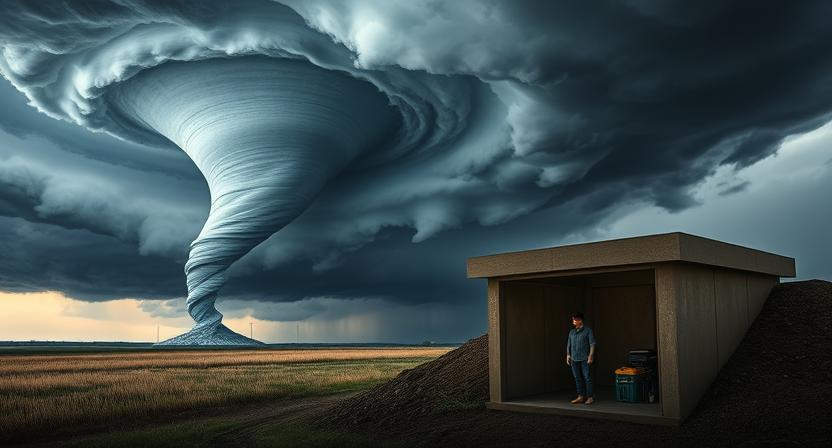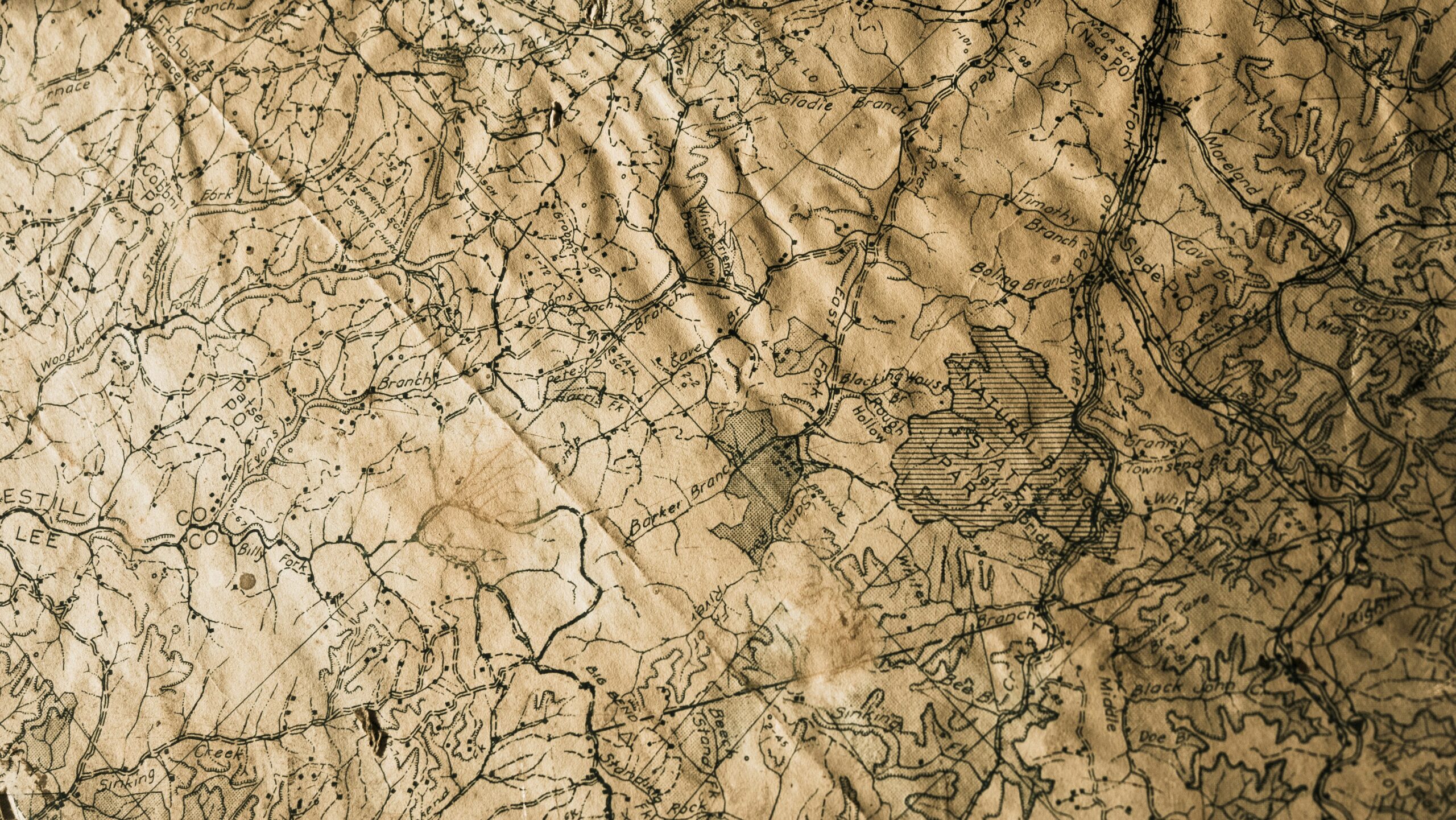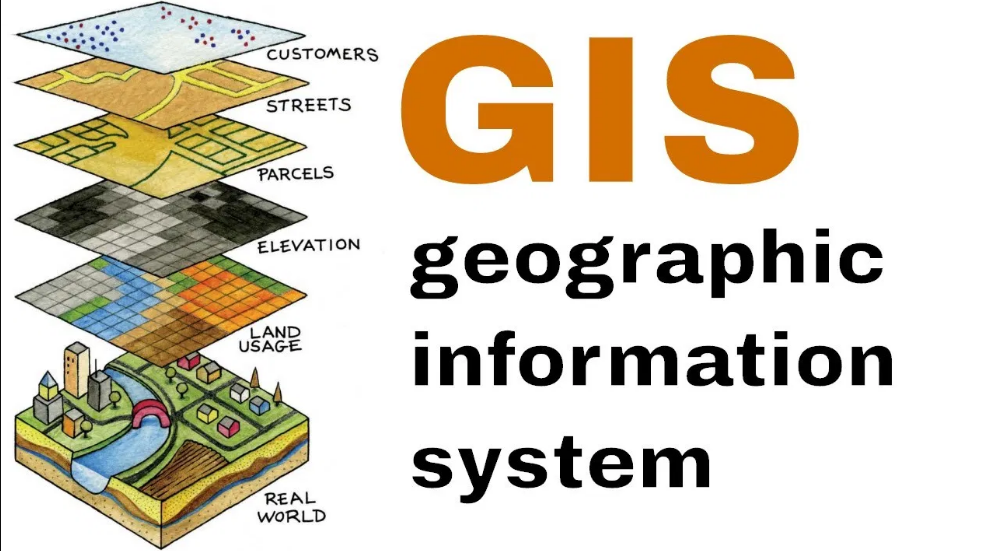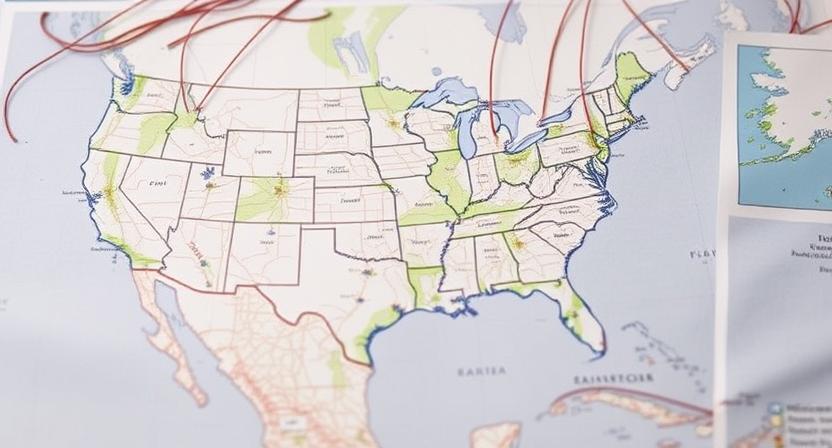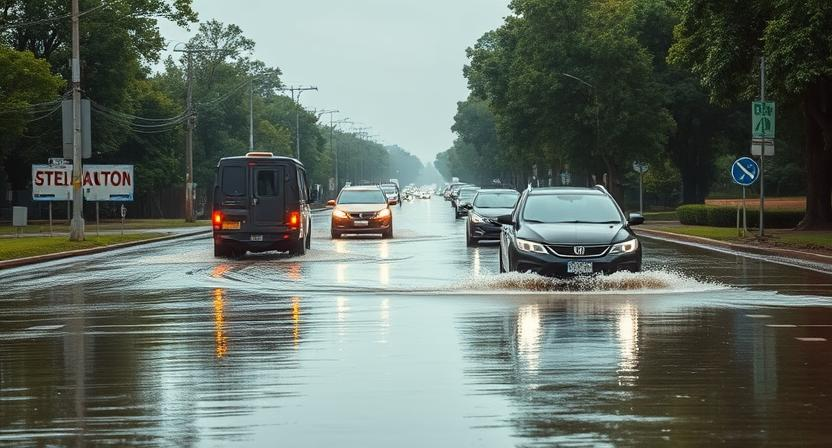
Signs of an Approaching Flood

Dark clouds gathering in the sky, accompanied by rumbling thunder and flashes of lightning, may indicate an impending flood. Sudden and intense rainfall, especially after a period of heavy precipitation, can also be a warning sign of a potential flood risk in the area. It is essential to stay alert to changing weather conditions and be prepared to take immediate action if necessary.
Rapidly rising water levels in rivers, creeks, and streams can be a clear indication of an approaching flood. Pay attention to any unusual noises, such as roaring water or cracking trees, which could signal the force of floodwaters moving through the area. Keep an eye out for debris floating downstream, as this can further indicate the severity of the flooding.
• Dark clouds gathering in the sky
• Rumbling thunder and flashes of lightning
• Sudden and intense rainfall
• Rapidly rising water levels in rivers, creeks, and streams
• Unusual noises like roaring water or cracking trees
• Debris floating downstream
Understanding Flood Warnings
Flood warnings are issued by meteorological agencies and emergency services to alert individuals about impending flooding in specific areas. These warnings are typically based on weather forecasts, river levels, and other factors that indicate the potential for flooding. It is essential to take flood warnings seriously and act promptly to protect yourself and your loved ones.
When a flood warning is issued for your area, it is crucial to stay informed through trusted sources such as local news stations, weather apps, and official websites. Pay attention to any evacuation orders or instructions provided by authorities, and be prepared to take immediate action to ensure your safety. Remember that being proactive in response to flood warnings can help minimize risks and prevent potentially dangerous situations.
• It is important to have a plan in place for evacuation in case of flooding
• Keep emergency supplies such as food, water, medication, and important documents readily accessible
• Stay tuned to updates from local authorities and follow their guidance during a flood warning
• Avoid driving or walking through flooded areas as it can be extremely dangerous
Creating a Family Emergency Plan
Once you have taken the necessary steps to prepare for a potential flood, the next crucial aspect is creating a family emergency plan. This plan should outline how your family will respond in the event of a flood, ensuring everyone knows their roles and responsibilities. Make sure to discuss evacuation routes, designated meeting points, and communication methods with all family members.
Additionally, include important contact information for local authorities, emergency services, and family members in your plan. It is also essential to practice your emergency plan regularly with everyone in your household so that if a flood does occur, everyone is prepared and knows what to do without hesitation.
– Discuss evacuation routes with all family members
– Designate meeting points in case of separation
– Establish communication methods for staying in touch during an emergency
– Include contact information for local authorities and emergency services
– Practice the emergency plan regularly with household members
Assembling an Emergency Kit
When preparing for a flood, having an emergency kit is essential to ensure the safety and well-being of your family. Your emergency kit should include basic supplies such as non-perishable food, water, first aid supplies, medications, hygiene products, a flashlight, batteries, a multi-tool, and important documents like IDs and insurance policies. It’s advisable to have enough supplies to last at least three days for each member of your household.
Additionally, consider including items like a whistle to signal for help, a portable phone charger, extra clothing and blankets, cash, and any specific items needed for infants, elderly family members, or pets in your emergency kit. Keep your emergency kit in a waterproof container or bag that is easily accessible in case you need to evacuate quickly. Regularly check and update your emergency kit to ensure that all supplies are valid and in good condition.
• Non-perishable food
• Water
• First aid supplies
• Medications
• Hygiene products
• Flashlight
• Batteries
• Multi-tool
• Important documents (IDs, insurance policies)
In addition to the basic supplies listed above, consider adding:
• Whistle for signaling help
• Portable phone charger
• Extra clothing and blankets
• Cash
• Specific items for infants, elderly family members, or pets
Make sure to store your emergency kit in a waterproof container or bag that is easily accessible. Remember to regularly check and update your emergency kit to ensure all supplies are valid and in good condition. Being prepared with an emergency kit can make a significant difference during times of crisis such as floods.
Securing Important Documents

Ensure the safety of your important documents by placing them in waterproof and fireproof containers. Documents such as birth certificates, passports, insurance policies, deeds, and wills should be stored in a secure location within your home, preferably on an upper level. Additionally, consider making digital copies of these documents and storing them on a secure online cloud service for easy access in case of an emergency.
In the event of a flood warning, quickly gather all essential documents and place them in your waterproof container. Be prepared to grab these items at a moment’s notice if evacuation orders are issued. Securing your important documents not only helps you navigate the aftermath of a flood more efficiently but also ensures that your critical information remains safe and accessible during trying times.
• Ensure the safety of your important documents by placing them in waterproof and fireproof containers.
• Store documents such as birth certificates, passports, insurance policies, deeds, and wills in a secure location within your home.
• Consider making digital copies of these documents and storing them on a secure online cloud service for easy access in case of an emergency.
• In the event of a flood warning, quickly gather all essential documents and place them in your waterproof container.
• Be prepared to grab these items at a moment’s notice if evacuation orders are issued.
• Securing your important documents not only helps you navigate the aftermath of a flood more efficiently but also ensures that your critical information remains safe and accessible during trying times.
Preparing Your Home for a Flood
To prepare your home for a flood, start by securing any loose items around your property that could be swept away by rising waters. Clear drains and gutters of debris to prevent blockages and allow proper water flow. Trim any overhanging branches that could potentially fall onto your home during a flood.
Next, consider installing sewer backflow valves to prevent sewage from backing up into your home. Elevate electrical outlets, switches, sockets, and appliances well above the anticipated flood levels. Seal basement walls with waterproofing compounds and elevate valuable items stored in the basement to minimize potential damage in case of flooding.
• Secure any loose items around your property
• Clear drains and gutters of debris
• Trim overhanging branches near your home
• Install sewer backflow valves
• Elevate electrical outlets, switches, sockets, and appliances
• Seal basement walls with waterproofing compounds
• Elevate valuable items stored in the basement
Building a Barrier with Sandbags
To protect your property from flooding, building a barrier with sandbags can be an effective preemptive measure. Start by stacking sandbags in a staggered pattern, placing them tightly against each other to form a barrier. Ensure that the sandbags are securely placed and properly overlapped to prevent water from seeping through.
Remember to focus on potential entry points for water, such as doors and windows, when constructing the barrier. It’s important to monitor the barrier regularly and reinforce weak spots as needed. Sandbags can provide a temporary solution to divert water away from your home, but it’s always best to heed evacuation orders if authorities recommend doing so.
Building a barrier with sandbags can help protect your property from flooding by diverting water away. Here are some steps to follow:
• Start by stacking sandbags in a staggered pattern
• Place them tightly against each other to form a barrier
• Ensure the sandbags are securely placed and properly overlapped
• Focus on potential entry points for water, such as doors and windows
• Monitor the barrier regularly and reinforce weak spots as needed
While sandbags can provide temporary protection, always prioritize safety and heed evacuation orders if authorities recommend doing so. By taking proactive measures like building a barrier with sandbags, you can help minimize flood damage to your property.
Turning off Utilities
Before a flood hits, it is crucial to turn off your home’s utilities to prevent potential hazards and damage. First, locate your breaker box and turn off the electricity to avoid the risk of electric shocks or fires during flooding. Then, shut off the gas supply to prevent leaks and potential explosions. Furthermore, turning off the water main can help prevent flooding within your home and water damage to your belongings. Taking these precautionary measures can significantly reduce the risks associated with a flood and keep you and your family safe.
• Locate your breaker box and turn off the electricity
• Shut off the gas supply to prevent leaks and explosions
• Turn off the water main to prevent flooding within your home
By following these simple steps, you can protect your home and loved ones from potential dangers during a flood. It is important to be prepared and take action before disaster strikes. Don’t wait until it’s too late – make sure to turn off your utilities as soon as possible when faced with a flood warning or emergency. Stay safe and stay informed to minimize risks and ensure a quick recovery after the floodwaters recede.
Listening to Local Authorities

During a flood, it is crucial to heed the advice and instructions provided by local authorities. These individuals are trained to assess the situation and make decisions that prioritize public safety. By following their guidance, you can help ensure your own well-being as well as the well-being of others in your community. Ignoring the directives of local authorities during a flood can put you at risk of injury or even death, so it is essential to take their warnings seriously.
Local authorities may issue evacuation orders or recommend specific actions to take during a flood. It is important to act promptly and decisively in response to these directives. Keep in mind that local authorities have access to information and resources that can help protect you in the event of a flood, so tuning in to their updates and complying with their instructions is key to staying safe. By staying informed and following the guidance of local authorities, you can increase your chances of navigating a flood event successfully.
• It is crucial to heed the advice and instructions provided by local authorities during a flood
• Local authorities are trained to assess the situation and prioritize public safety
• Ignoring directives of local authorities can put you at risk of injury or death
• Local authorities may issue evacuation orders or recommend specific actions during a flood
• Acting promptly in response to directives from local authorities is important
• Tuning in to updates from local authorities can help protect you during a flood event
Evacuating if Instructed
If local authorities issue an evacuation order, it is crucial to follow their instructions promptly. Do not delay or ignore evacuation orders, as they are issued to ensure your safety in the face of imminent danger. Remember that evacuation routes are carefully planned to lead you to safety, so it is vital to adhere to the designated paths and instructions provided by emergency personnel.
When evacuating, gather your family members, pets, and emergency kit quickly but efficiently. Ensure that everyone is accounted for and has any necessary medications or vital documents on hand. Leave your home locked and secure, but do not spend unnecessary time gathering items that are not essential for your immediate safety. Evacuate in a calm and orderly manner, and follow the specified routes to reach a safe location away from the flood risk area.
• Gather your family members, pets, and emergency kit quickly but efficiently
• Ensure everyone has necessary medications and vital documents
• Leave your home locked and secure
• Do not spend time gathering non-essential items
• Evacuate in a calm and orderly manner
• Follow specified routes to reach safe location
Avoiding Floodwaters
When faced with floodwaters, it is crucial to avoid direct contact with them whenever possible. Floodwaters can be contaminated with various pollutants, sewage, and debris that pose significant health risks to individuals. Residents should refrain from wading, swimming, or playing in floodwaters to prevent exposure to harmful substances that can cause infections or illnesses. Additionally, fast-moving floodwaters can be powerful and unpredictable, carrying debris and posing drowning hazards.
Moreover, avoiding floodwaters also means staying away from areas where water is rapidly flowing, such as rivers, streams, and drainage channels. It is essential to steer clear of bridges and culverts during a flood, as these areas are susceptible to collapse due to the force of the water. Even seemingly shallow water can be deceivingly dangerous, with the potential to sweep vehicles off the road or sweep individuals off their feet. By exercising caution and staying away from floodwaters, individuals can reduce the risk of injury or harm during a flooding event.
• Avoid direct contact with floodwaters
• Refrain from wading, swimming, or playing in floodwaters
• Fast-moving floodwaters can be powerful and unpredictable
• Stay away from areas where water is rapidly flowing
• Avoid bridges, culverts, rivers, streams, and drainage channels during a flood event
• Seemingly shallow water can still be dangerous
• Exercise caution to reduce the risk of injury or harm
Seeking Higher Ground
When faced with a flood situation, seeking higher ground is crucial for ensuring safety and minimizing risks. By moving to elevated areas, individuals can avoid being trapped in rapidly rising waters and reduce the chance of becoming stranded or swept away by the current. High ground provides a buffer against floodwaters, giving individuals a better vantage point to assess the situation and make informed decisions about their next steps.
Choosing elevated terrain such as hills, ridges, or higher floors in buildings can offer refuge during a flood. It is important to avoid low-lying areas and areas prone to flooding as water levels can quickly rise and pose a danger to those caught off guard. Seeking higher ground not only improves the chances of survival but also facilitates easier access for rescuers in the event of an emergency.
• When faced with a flood situation, seeking higher ground is crucial for ensuring safety and minimizing risks.
• Moving to elevated areas can help individuals avoid being trapped in rapidly rising waters and reduce the chance of becoming stranded or swept away by the current.
• High ground provides a buffer against floodwaters, giving individuals a better vantage point to assess the situation and make informed decisions about their next steps.
• Choosing elevated terrain such as hills, ridges, or higher floors in buildings can offer refuge during a flood.
• It is important to avoid low-lying areas and areas prone to flooding as water levels can quickly rise and pose a danger to those caught off guard.
• Seeking higher ground not only improves the chances of survival but also facilitates easier access for rescuers in the event of an emergency.
Staying Informed with a Weather Radio

In times of emergencies like floods, a weather radio can be a vital tool in keeping you informed and safe. Weather radios are designed to receive broadcasts from the National Oceanic and Atmospheric Administration (NOAA), providing up-to-date information on weather conditions and alerts specific to your area. Tuning in to a weather radio during a flood event can help you stay ahead of the situation and make informed decisions for you and your family’s safety.
Weather radios are equipped with features such as automatic alerts that sound an alarm when there are severe weather warnings in your area. This can be instrumental in giving you timely warnings about approaching floods, allowing you to take necessary precautions promptly. Additionally, weather radios can provide details on evacuation orders, shelter locations, and other essential information that can guide you through navigating the flood crisis effectively.
– Weather radios receive broadcasts from NOAA
– Provide up-to-date information on weather conditions and alerts specific to your area
– Help you stay ahead of flood situations
– Automatic alerts for severe weather warnings in your area
– Timely warnings about approaching floods
– Details on evacuation orders, shelter locations, and essential information
Checking on Neighbors and Loved Ones
In times of flooding, it is crucial to prioritize checking on neighbors and loved ones in your community. The aftermath of a flood can be chaotic and individuals may find themselves in vulnerable situations. By reaching out to those around you, you can offer support, assistance, and ensure their safety during the crisis.
Whether it’s a simple phone call, a visit to their home, or coordinating a community effort to help those in need, checking on neighbors and loved ones can make a significant difference in the face of a flood. By staying connected and looking out for one another, you not only foster a sense of unity but also strengthen the resilience of the community as a whole.
• Checking on neighbors and loved ones during a flood is crucial for their safety
• Offering support and assistance can make a significant difference in the aftermath of a flood
• Simple acts like phone calls or visits can help ensure the well-being of those around you
• Coordinating community efforts to help those in need can strengthen unity and resilience
Avoiding Bridges and Low-Lying Areas
When faced with the risk of a flood, it is crucial to avoid bridges and low-lying areas. Bridges can become extremely dangerous during a flood due to swiftly moving water and debris. Attempting to cross a flooded bridge can result in being swept away and trapped in a perilous situation. It is best to stay far away from bridges until the flooding subsides and officials declare it safe to pass.
Low-lying areas are prone to flooding quickly during heavy rainfall, putting individuals at risk of being stranded or trapped by rising waters. Avoiding these areas altogether during a flood event is essential for personal safety and well-being. It is important to stay vigilant and steer clear of low-lying regions to prevent getting caught in dangerous floodwaters.
• Bridges can be dangerous during floods due to swiftly moving water and debris
• Crossing a flooded bridge can result in being swept away and trapped
• Stay far away from bridges until officials declare it safe to pass
• Low-lying areas flood quickly during heavy rainfall
• Individuals risk being stranded or trapped by rising waters in these areas
• Avoid low-lying regions altogether during a flood event for personal safety
Being Cautious of Wildlife and Insects

When floods occur, wildlife in affected areas may be displaced and seek refuge in unexpected places. Insects, such as mosquitoes and other pests, may also become more prevalent in flooded areas. It is important to be cautious of wildlife and insects that may be seeking shelter or food near your home. Take necessary precautions to avoid contact and potential harm from these animals and insects. Remember that they are also trying to survive the flood and may act unpredictably due to stress and fear.
Additionally, standing water from floods can create breeding grounds for mosquitoes, which can carry diseases such as West Nile virus and Zika virus. Be proactive in getting rid of any stagnant water around your property to prevent the breeding of mosquitoes. If you must be outside in flooded areas, wear long sleeves, pants, and insect repellent to protect yourself from insect bites. By being cautious of wildlife and insects during a flood, you can help ensure the safety of yourself and your family.
• Be cautious of wildlife and insects seeking shelter in flooded areas
• Take necessary precautions to avoid contact and potential harm from animals and insects
• Standing water from floods can create breeding grounds for mosquitoes
• Get rid of stagnant water around your property to prevent mosquito breeding
• Wear long sleeves, pants, and insect repellent when outside in flooded areas
Avoiding Driving Through Flooded Roads
During a flood, one of the most hazardous situations you can encounter is driving through flooded roads. It can be challenging to gauge the depth of the water and the condition of the road underneath, putting you at risk of becoming stranded or swept away. Even a small amount of water can be deceiving and pose a serious threat to your safety and the safety of others on the road.
Driving through floodwaters can also damage your vehicle, causing costly repairs and potentially leaving you without transportation. The force of moving water can easily sweep away cars, leading to a dangerous and life-threatening situation. It is crucial to avoid driving through flooded roads at all costs to prevent accidents, injuries, and even fatalities.
• Avoid driving through flooded roads during a flood
• It can be challenging to gauge the depth of water and condition of the road underneath
• Even small amounts of water can pose serious threats to safety
• Driving through floodwaters can damage your vehicle, leading to costly repairs
• The force of moving water can easily sweep away cars, creating life-threatening situations
Seeking Shelter in a Sturdy Building
Find a sturdy building as a last resort if you are unable to evacuate in time before a flood hits. Look for a building with multiple stories as higher floors provide better protection from rising waters. Avoid seeking shelter in buildings with structural damage or near bodies of water, as they can be more susceptible to collapsing during a flood.
Once inside the sturdy building, stay away from windows and exterior walls to minimize the risk of injury from debris carried by the floodwaters. If the building has multiple levels, move to the highest floor possible and avoid basements or lower levels where water can accumulate quickly. Make sure to have a emergency kit with essential supplies such as food, water, medication, and a flashlight readily available in case of power outages.
• Find a sturdy building with multiple stories
• Avoid buildings with structural damage or near bodies of water
• Stay away from windows and exterior walls once inside
• Move to the highest floor possible in the building
• Avoid basements or lower levels where water can accumulate quickly
• Have an emergency kit with essential supplies ready, including food, water, medication, and a flashlight
Calling for Help if Trapped

If you find yourself trapped due to flooding, it is crucial to remain as calm and composed as possible. Take stock of your surroundings and assess if there is a way to safely escape before calling for help. If exiting is not an option, contact emergency services immediately with precise information about your location and the nature of your predicament.
While waiting for help to arrive, try to attract attention by making noise or using a flashlight, especially if you are in a confined or hard-to-reach space. Stay near a window or another point of access if feasible and keep yourself visible to rescuers. Remember to conserve your energy and avoid any unnecessary risks that could exacerbate the situation.
• Remain as calm and composed as possible
• Assess if there is a safe way to escape before calling for help
• Contact emergency services with precise information about your location and situation
• Try to attract attention by making noise or using a flashlight while waiting for help
• Stay near a window or point of access to remain visible to rescuers
• Conserve energy and avoid unnecessary risks that could worsen the situation
Documenting Damage for Insurance Claims.
When preparing to file an insurance claim for flood damage, documentation is crucial. Take clear, detailed photos of the affected areas and belongings before any cleanup or repairs are made. It’s essential to have visual evidence of the extent of the damage to support your claim.
Additionally, make a list of items that have been damaged or lost due to the flood. Include descriptions, quantities, and values of these items to help ensure accurate compensation from your insurance provider. Keep all receipts, invoices, and repair estimates related to the flood damage as further proof of the financial impact of the disaster.
• Take clear, detailed photos of affected areas and belongings
• Make a list of damaged or lost items with descriptions, quantities, and values
• Keep all receipts, invoices, and repair estimates related to the flood damage

